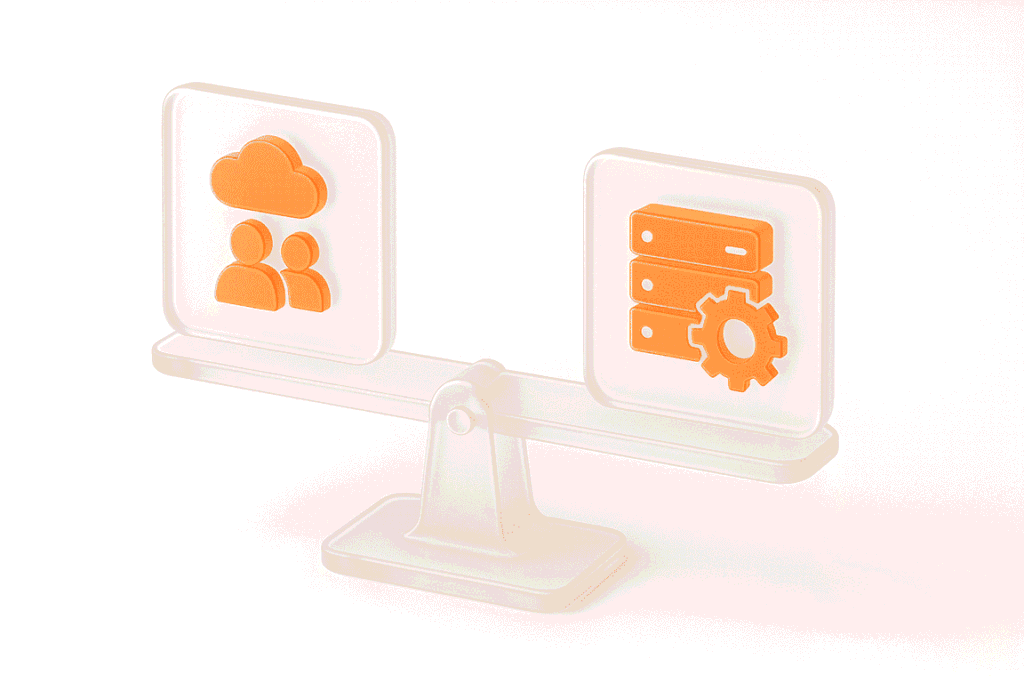Defining Reliability and Availability
What is Reliability?
Reliability refers to the probability that a system will consistently perform as expected, delivering correct output over a set period of time. In the world of Site Reliability Engineering (SRE), reliability is a core metric that drives everything we do. It’s not just about whether a service works but about how well it performs under real-world circumstances that constantly change and challenge the system.
From an SRE’s perspective, reliability is about meeting user expectations every time. When we talk about reliability, we’re not just concerned with uptime—we’re focusing on whether the IT service can handle spikes in traffic, unexpected hardware failures, or even software bugs, all without affecting the user experience. It’s about maintaining the promise of performance consistency no matter what the environment throws at it.
In industries that rely heavily on automation, such as finance, healthcare, and logistics, the importance of reliability can’t be overstated. Failures in process reliability can lead to massive financial losses, operational downtime, and even safety risks. As SREs, we spend a significant amount of our time designing systems that anticipate and prevent failures before they happen, using tools like proactive maintenance and error budgets to strike a balance between shipping fast and staying reliable.
Ultimately, system’s reliability isn’t just a technical metric—it’s a key driver of user trust and business success. If a system consistently fails to meet reliability standards, it can erode user confidence and have a severe impact on the bottom line. That’s why, for SREs, IT service reliability is non-negotiable—it’s the foundation of everything we build.
What is Availability?
Availability refers to the percentage of time that a system or component is operational and capable of performing its intended function. From an SRE’s perspective, availability is one of the most critical metrics we track because it directly impacts user experience. It’s not just about uptime; it’s about making sure the IT service is accessible and functional when it’s needed most.
Availability is usually measured as a ratio or percentage, often referred to in terms of “nines” (e.g., 99.9% availability). This metric can be calculated over various time periods, from minutes to months, and gives us insight into how often our services meet their operational promises. The closer to 100%, the better, but even minor gaps in availability can have a huge impact, especially in industries that rely on always-on services, such as e-commerce or cloud computing.
For businesses, maintaining high availability is essential for keeping users satisfied and maintaining trust, so cloud based application testing could be essential for them. Downtime can lead to missed opportunities, financial losses, and frustrated users. As SREs, our job is to ensure systems stay up and running as close to 100% of the time as possible. To achieve this, we use strategies like redundancy, failover systems, and preemptive maintenance to minimize downtime and keep services reliable.
Ultimately, availability isn’t just a number—it’s a promise to users that the service will be there when they need it. When a service goes down, it’s not just a technical issue; it’s a break in user trust. That’s why maintaining high availability is one of the core goals for any SRE team.
Measuring Reliability and Availability
Measure Reliability
To measure reliability effectively, SREs rely on key reliability metrics like Mean Time Between Failures (MTBF). MTBF is crucial for evaluating how consistently a service meets performance standards, as it quantifies the average time a service or component operates without interruptions. This metric provides a clear indication of overall system health.
Mean Time Between Failures
MTBF is calculated by dividing the total operational time by the number of failures within a specific period. For example, if a server runs for 1000 hours and experiences 5 failures during that time, the MTBF would be 200 hours. This metric gives insight into how long a system can perform reliably before a failure occurs.
A higher MTBF means fewer IT service interruptions, translating to a more reliable service. This is particularly important in critical environments where downtime can have significant financial or operational consequences.
Failure Rate
The failure rate is another critical metric and is the inverse of MTBF. While MTBF measures how long a system runs before failing, the failure rate tells you how often these failures occur within a specific time frame. A low rate indicates a more reliable service, which is the goal for most SRE teams.
Availability Metrics
Availability is a key performance indicator for systems, reflecting how often they are operational and accessible when needed. By measuring availability through various metrics, businesses can ensure consistent service delivery and minimize downtime. Let’s break down the essential metrics used to calculate availability.
Actual Operation Time
Actual operation time is the total length of time a system or asset performs its intended function without interruption. This metric includes any period when the system is actively working, processing requests, or fulfilling its core responsibilities. If software experiences failures, these periods do not count toward the actual operation time. The goal is to maximize actual operation time to ensure optimal service performance.
For example, if a server is expected to run 24/7 but experiences two hours of total downtime in a week, only the operational hours (166 hours) will be considered in the calculation. This metric helps to track how well the service is delivering continuous uptime.
Scheduled Operation Time
Scheduled operation time refers to the total period during which a system is expected to be operational. It encompasses all the time when a system is intended to work but excludes any planned downtime or periods when the system is not expected to operate. This time can include business hours, service windows, or defined working periods based on organizational needs.
For instance, if a service is only required to run during business hours (e.g., 8 hours per day, 5 days a week), the scheduled operation time would be 40 hours per week. Scheduled operation time provides a clear expectation of when the system should be running and helps measure whether the service is meeting its intended availability.
Idle Time Exclusion
When calculating availability, it’s essential to exclude idle time, which is any period when the system is not scheduled to operate. This might include maintenance windows, system updates, or periods when the system is intentionally offline. By excluding idle time, organizations can focus on how well the system performs during its operational periods.
For example, if maintenance is scheduled for two hours each week, that time is excluded from the availability calculation, providing a more accurate measure of system performance during the scheduled operation time.
Availability Percentage Calculation
Availability percentage is calculated by dividing the actual operation time by the total scheduled operation time. The formula is:
By tracking these metrics, businesses can determine how well their systems meet operational expectations, identify areas for improvement, and maintain high service availability.
Improving System Performance
Proactive Maintenance
Proactive maintenance is critical for increasing equipment availability and improving service reliability. It involves streamlining maintenance and operational practices to prevent issues before they disrupt operations.
By conducting regular inspections and maintenance, potential problems can be identified early and addressed before they escalate into major failures. This approach minimizes unexpected breakdowns and reduces unplanned downtime, ensuring that systems remain functional and available when needed.
Maintenance strategies not only help maintain service reliability and availability but also improve overall productivity. By focusing on preventive actions, SREs and operations teams can ensure that systems run smoothly, avoiding costly disruptions that can affect both user experience and business outcomes.
Ultimately, improving maintenance practices through proactive efforts is a powerful way to keep systems reliable, minimize service unavailability, and ensure that services consistently meet operational demands, preventing the occurrence of a service outage.
Optimizing Availability Measures
To improve availability, the first step is to understand your current availability measurement. By accurately tracking how often your system is operational, you can identify areas for improvement.
Set an achievable availability target based on your business needs and ensure that your systems are designed to meet that target. This involves implementing redundancy, failover systems, and other strategies to maintain uptime.
Continuous monitoring is essential. By keeping a close eye on application performance, you can spot potential issues before they lead to service uavailability. Proactively identifying and addressing these issues ensures higher availability.
Finally, having a solid incident response plan in place is crucial for minimizing the impact of unexpected service outages. A well-prepared response team can quickly resolve incidents, reducing downtime and keeping your services reliable.
Balancing Reliability and Availability
Availability and reliability are distinct, meaningful metrics that offer valuable insights into system performance. Reliability measures how consistently a system performs without failure, while availability tracks how often it’s accessible when needed.
To gain a full understanding of system health, businesses should analyze these metrics separately. This allows companies to make targeted improvements in both uptime and operational consistency.
To deliver always-on service, it’s essential to balance reliability vs availability. A reliable system that’s frequently down is just as problematic as an available system that underperforms.
Conclusion: Reliability vs Availability
When determining the maintenance needs of a system or component, availability and reliability are essential factors. While availability measures how often a system is operational, reliability focuses on how consistently it performs without failure. Understanding the differences between reliability vs availability is crucial for businesses aiming to provide always-on service.
Improving both availability and reliability can significantly reduce downtime and increase overall productivity. A system that is both available and reliable ensures smoother operations and a better user experience.
Regular maintenance and proactive inspections play a key role in this. They help identify potential issues early, preventing small problems from becoming major disruptions.
Learn more about performance testing benefits for your business.





